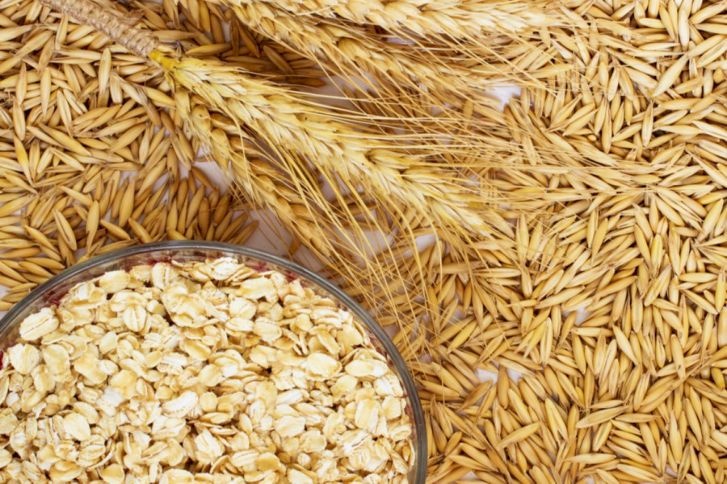
Many Benefits of Oats Rival Weight Loss Medications
SadaNews - Recent study results revealed that one type of dietary fiber, which is abundantly found in common breakfast meals, can activate the same beneficial metabolic functions stimulated by GLP-1 agonists, such as the famous weight-loss injections "Ozempic," without high costs or side effects, according to what was reported by "New Atlas" based on a journal article in Nutrition.
Frank Douc, an associate professor at the "University of Arizona," said: "We know that fiber is important and useful; but the problem lies in the existence of many different types of it. We wanted to identify the type of fiber most beneficial for weight loss and improving blood glucose balance, so we could educate the community and consumers."
In a study conducted by Douc, researchers performed a comprehensive analysis of how different types of fibers affect gut microbes, which play a crucial role in how food is processed in the digestive system.
Naturally Combating Obesity
Researchers studied pectin, beta-glucan, wheat dextrin, resistant starch, and cellulose, all of which are plant fibers, and found that one specific type excelled in its effectiveness in combating obesity naturally.
Many previous studies, such as those comparing a fiber-rich diet with a diet rich in fermented foods, viewed fiber as a single nutrient. While dietary fibers, both soluble and insoluble, generally have widespread health benefits, from promoting feelings of fullness to lowering blood cholesterol levels, the sum of their parts has not provided a comprehensive understanding of their weight loss potential.
Beta-Glucan
Researchers quickly focused on one type of fiber, beta-glucan, which has previously been noted for its role in modulating appetite and satiety hormones, namely peptide YY (PYY) and glucagon-like peptide-1 (GLP-1). Last year, a study from the "University of Agriculture" in Faisalabad, Pakistan, showed that oats, specifically rich in beta-glucan, affected these hormones in beneficial ways for weight management.
In this latest study, researchers divided mice into 5 groups, all fed high-fat and sucrose diets (HFD). Each group’s diet also included 10% cellulose (control group), or pectin, or beta-glucan, or wheat dextrin, or resistant starch.
Health indicators were measured over 18 weeks to evaluate weight gain ratios, fat mass, and lean body mass. Researchers also looked at the impact of the diets on blood sugar levels post-consumption, for up to two hours after eating.
Less Weight Gain
Researchers found that laboratory mice that consumed a diet containing 10% beta-glucan experienced significantly less weight gain despite their high-fat and sugary diet, along with much lower fat mass while retaining considerably more muscle mass. These mice also showed sustained energy expenditure, measured through their movement over 24 hours.
Improved Insulin Sensitivity
The beta-glucan group was the only group that demonstrated improved insulin sensitivity and positive blood sugar levels throughout the 18 weeks.
Other analyses indicated that laboratory mice consuming diets supplemented with beta-glucan developed a type of microbiota that prepared them for all these positive health outcomes, as gut bacteria and molecules produced from digestion changed.
These molecules, known as metabolites, are believed to be a key piece of the puzzle when it comes to how fiber encourages weight loss.
Researchers found that one metabolite, butyrate, is the driver of this effect. Butyrate, a short-chain fatty acid (SCFA) produced by some gut bacteria during the fermentation of fiber, stimulates the release of GLP-1, which has become known for playing a crucial role in conveying the sense of fullness to the brain when eating.
Medications like semaglutide, such as Ozempic, artificially create this gut-brain interaction, but in a more effective way that does not face the same rapid decline as when it happens naturally.
High-Calorie Fats
Previous studies have shown that butyrates stimulate the burning of brown fat in laboratory mice, suggesting that beta-glucan was helping to enhance the availability of high-calorie fats, reducing the accumulation of "white fat" which is considered a hallmark of weight gain and obesity.
The researchers noted that "beta-glucan supplementation solely during a high-fat diet reduced obesity and weight gain and improved glucose tolerance compared to high-fat cellulose, while all other fibers had no effect. The effects were also related to increased energy expenditure and locomotor activity in the mice."
Oats, as well as barley, contain the highest concentrations of beta-glucan, but it is also present in rice, mushrooms, and seaweeds. Oats contain about 3-5% of this fiber per cup of dry grains, and cooking (not baking) does not reduce its concentration.

Apple and Google Send Notifications About Cyber Threats to Users in Over 150 Countries

Brain Chip Enables Patients to Move Robotic Limbs with Just Thought

OpenAI Founder Aiming to Establish Rocket Company to Compete with Musk in Space

Used by Cleopatra to Brighten Her Eye Whites... What Are the Health Benefits of Castor Oil...

Marketed for recovery from injuries and muscle building... What are the side effects of pe...

From Black to White... 8 Types of Tea That Help with Weight Loss and Fat Burning

New Test Reveals Bladder Cancer with High Accuracy

